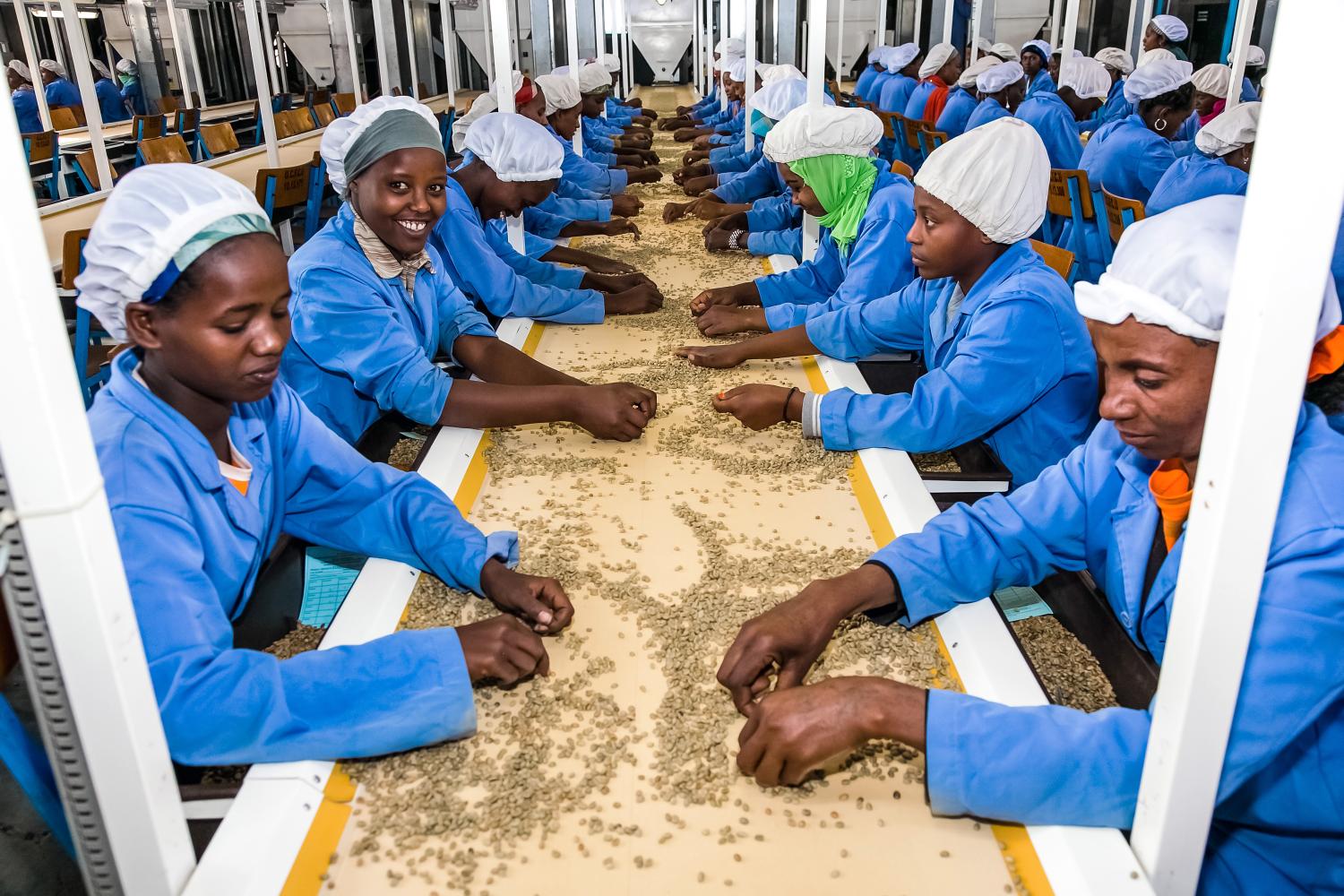Abstract
The study investigates the potential of Industries without Smokestacks (IWOSS) to create jobs in Ethiopia and focuses on agro-processing (particularly food and beverage), horticulture, tourism, and transport sectors. These categories were selected due to their employment potential, productivity, and tradability.
The IWOSS sectors exhibit the highest labor productivity in Ethiopia. In 2017, the labor productivity of the IWOSS was close to three times that of overall labor productivity, close to 2.44 times that of manufacturing and 3.75 times that of non-IWOSS industries. Between the 2000 and 2017 overall labor productivity grew annually, on average, at 8.34 percent while the IWOSS industries grew by about 16 percent annually. The manufacturing and non-IWOSS industries grew at 13.4 percent and 6 percent respectively in the same period.
With close to 68 percent employment share, agriculture remains by far the major employer in Ethiopia followed by trade (IWOSS) and manufacturing (non-IWOSS) with 7 percent and 4 percent respectively. Looking at employment growth between 2000 and 2017, mining (non-IWOSS), finance (IWOSS), utility (non-IWOSS), construction (non-IWOSS), and transport (IWOSS) registered the fastest growth. In terms of productivity, finance (IWOSS) and transport (IWOSS) were the most productive sectors in 2017. Hence, the IWOSS in Ethiopia promise to be important sources of employment and a high-value contributors to the national economy.
Aggregate labor productivity by sector was mainly driven by within sector productivity with 67 percent of the aggregate labor productivity change between 2010 and 2017 coming from within sector productivity change while the remaining came from structural change. The IWOSS industries such as trade, agro-processing, and hotels and restaurants exhibited high within sector productivity. Financial services and horticulture gained more from labor mobility towards them. Among non-IWOSS industries the construction sector benefited from within sector and structural transformation. While the agricultural sector gained a modest productivity gain from within, a significant amount of labor moved out of it.
A number of challenges hinder the growth of the IWOSS in Ethiopia. Some of the binding constraints identified are the following:
- Inadequate skilled manpower remains one of the key challenges. Skills mismatch and inadequacy in skills in sectors such as agro-processing, horticulture, and tourism remains common.
- Lack of quantity and quality of raw material, poor infrastructure, and high cost of transportation are also binding constraints affecting productivity and competitiveness of the IWOSS.
- Lack of adequate cool chain management is a key problem facing the horticulture sector.
- Political instability poses a daunting challenge for the fledgling tourism sector. Low level of promotion and marketing is another key challenge facing the development of the tourism industry in Ethiopia.





